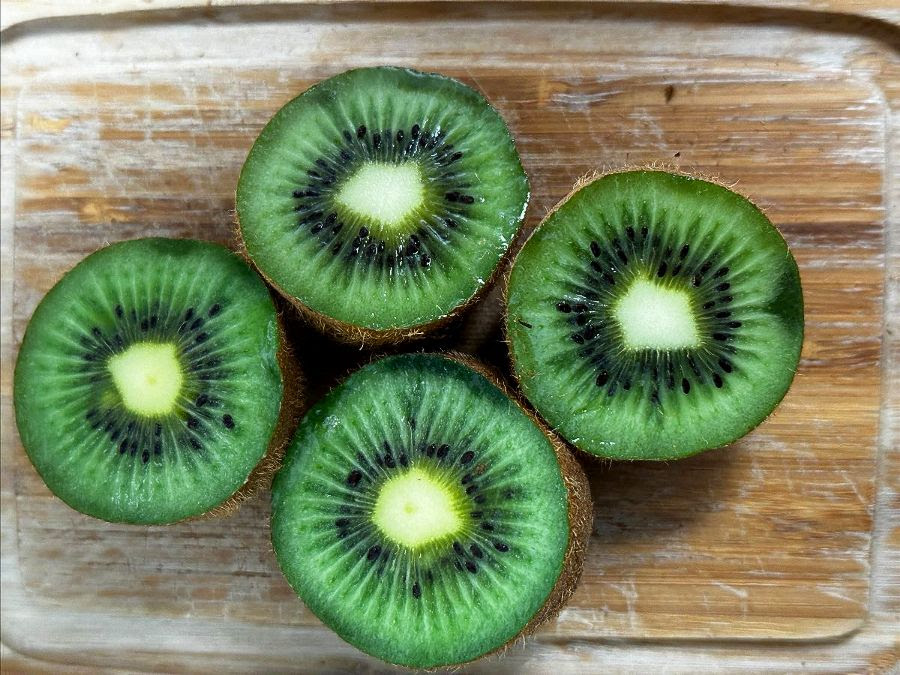Kiwi are truly bizarre-looking little fruits. With brown and often fuzzy exteriors and bright green or yellow interiors, kiwi fruits look like they came from another planet. While they do actually originate on Earth, their flavor and health benefits are out of this world.


Types of Kiwis
There are two main types of kiwi that you’ll see at the store or market: green and gold. Green kiwis have a fuzzy exterior, while gold ones are smooth. Green kiwis tend to have a sweet and sour flavor, while gold kiwis are much sweeter, but deliver slightly less nutrition. Each is delicious in its own right, and both are worth trying.
Nutrition
Both kinds of kiwi are incredibly nutritious. Each has high levels of vitamins C and E, potassium, and fiber, though the levels of each do differ slightly between varieties. For example, green kiwis are higher in fiber and potassium than gold kiwis, but gold kiwis have more vitamin C than green ones. Green kiwis also deliver some folate, while gold kiwis do not. Both types provide both soluble and insoluble fiber, making them excellent for digestion. Kiwis are also great for boosting heart health and immunity!

How to Use
Kiwis are an excellent and colorful addition to any salad, yogurt bowl, ice cream sundae, smoothie, or any other thing you can think of where a more acidic fruit is needed. My personal favorite thing to do is cut them in half and scoop out the fruit with a spoon. You can also turn them into preserves to spread on toast. If you’re looking for something snackable, try dehydrating your kiwis following these steps:
- Cut the kiwis in half and gently scoop out the fruit with a spoon between the fruit and the skin to remove. If you plan to leave the skin on, make sure to thoroughly wash them first.
- Slice the kiwis into ¼” inch slices and arrange them on a dehydrator rack. Dehydrate at 135°F for 10-18 hours until dry and leathery in texture. For extra sweetness, sprinkle with sugar prior to dehydrating them.
- Allow the slices to cool completely before storing them. For short-term storage, place in plastic ziplock bags. For longer-term storage, place them in an airtight container and regularly check for moisture.
